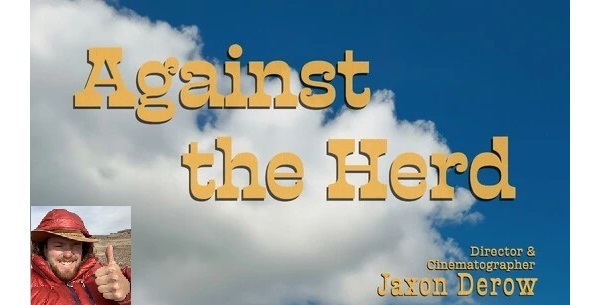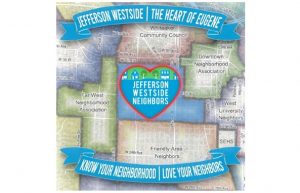EEFF film shows how virtual fences can support holistic grazing
5 min read
Curtis Blankinship (KEPW News): Almost a century of overgrazing has destroyed much of America’s public lands. But in northern Nevada, Cottonwood Ranch has discovered that cattle can actually be the key to restoring our rangelands. Now the Smith family must convince legislators that cows aren’t always eco-villains, or they’re sure to lose their land.
[00:00:21] Jaxon Derow grew up in Brooklyn, New York, where he helped lead a team of divers at the New York Harbor School, working with the Billion Oyster Project to restore New York City’s native oyster reefs.
After graduating from Northeastern University in Boston, Jackson left the world of marine research to attend the National Film and Television School in the U.K., where he uses his background in marine biology and philosophy to tell stories that promote more harmonious relationships with our natural world.
[00:00:50] He directed the film Against the Herd about how cattle can be part of a restorative agriculture program. At the 2024 Eugene Environmental Film Festival, I asked him if the buffalo could ever return to the Great Plains.
[00:01:04] A major component of this is the fencing. There’s a virtual fence and they work without fences.
[00:01:10] Jaxon Derow (Against The Herd, director and cinematographer): Not completely yet. They’re essentially part of a University of Nevada-led experiment with the fencing company right now. You know, those virtual fences are in the first, you know, those only came into existence five years ago.
[00:01:22] And so they were one of the first ranches to take them up and the company has kind of been working with them to test virtual fences. In the last two years, they’ve started really working quite effectively.
[00:01:34] And so essentially what’s happening right now is that there’s a big Forest Service perimeter fence, and there’s a big BLM perimeter fence that have been there for decades. Because the way that you run a lot of holistic management is you break up into really small pastures and move your animals a lot more often. So that grazing is much more concentrated for a much shorter period of time.
[00:01:56] And what it’s allowed them so far to do is to get rid of all the temporary fencing that they need to run those smaller pastures. So that’s all done virtually at this point. The hope is to expand that to all of their fencing eventually.
[00:02:09] Curtis: That’s what I mean, eventually there would be no fencing, because where I’m going with this is—
[00:02:12] Jaxon: That is the hope.
[00:02:13] Curtis: Like, Nevada, I guess Nevada is not part of the Great Plains, but there’s been several attempts to reconnect all the Great Plains. Could this be something similar to that?
[00:02:23] Jaxon: For sure, I mean, it’s a huge opportunity to run animals without big, big fencing, you know, absolutely. If you could put collars on all the cattle in the U.S., you would, for the most part, eliminate the need for boundary fencing.
[00:02:36] Curtis: I’m sure you’re familiar with the bison in Montana and the brucellosis where the cattle ranchers are against letting the bison roam, even though there’s never been a transmission of brucellosis to the cattle. So, (A): Can we ever have bison running with the cattle? And (B): Could we have some kind of hybrid—
[00:02:54] Jaxon: Yeah, I mean, buffalo are a hybrid, like, most of the bison that are in this country now are a hybrid. Bison have very different behavioral characteristics than cattle. So I don’t think they would get along very well. So I’m not sure they’d be running side by side.
[00:03:09] But you know at this point you need to manage bison herds to the extent that you manage cattle herds, like, even in the American Prairie Reserve that owns 20 million acres of land right now, they tried to institute a free-roaming bison herd in the U.S. and it’s still not enough land for them to actually be able to just let them graze free. It’s not feasible at this point.
[00:03:30] Curtis: We’ve been talking about export. Can we do this domestically and not dependent on exports?
[00:03:35] Jaxon: Agee (Smith)’s cattle are all sold and eaten in the U.S. None of that is being exported.
[00:03:39] Curtis: Can you elaborate on how that system works to benefit the grasslands? Like, it’s not just eating.
[00:03:44] Jaxon: Yeah, absolutely. I mean, a lot of northern Nevada is plains territory. It’s all sagebrush plains and part of what they do is, they stamp seeds into the ground. You’re essentially churning up soil, you’re breaking up the crust that develops in soils in places that don’t have all that much rain. And it means that a lot more rain enters the ground instead of running off.
[00:04:04] Essentially, the ground surface layer is much more 3D, which means it doesn’t absorb nearly as much heat. And so your ground temperatures are much lower, which creates a lot better habitat for grasses to grow and reduces evaporation, which means you have much more groundwater retention.
[00:04:20] And so the cattle do all of that and all of the grass species in the U.S. in order to grow, the more they’re grazed at the correct level, the more biomass they grow.
[00:04:32] You know, grass plants need grazing, they need to be cut every year in order to grow or else they end up essentially suffocating themselves.
[00:04:39] And so the cattle also play that role in his grasslands where because these grasses are getting grazed at the right rate, they actually can grow a much higher concentration of biomass than they would otherwise.
[00:04:51] Curtis: Well, you know, aren’t we sequestering the carbon in the meat of the cattle?
[00:04:55] Jaxon: You’re sequestering the carbon. And you know, the other thing that this does is, you know, it also promotes a lot higher concentration of root growth. And so that’s where the carbon is being stored. It’s being stored in the below-ground section of these plants that get grazed by cattle.
[00:05:07] And so you’re putting a lot more carbon into the ground because you’re creating a lot more undersoil biomass because of the community that you’re fostering in these rangelands.
[00:05:15] Curtis: Right. So it’s still going—
[00:05:17] Jaxon: It’s all going into the soil.
[00:05:18] Curtis: Yeah. All right. Thanks very much.
[00:05:19] Jaxon: Yeah, you’re welcome.
[00:05:19] Curtis: For KEPW News, I’m Curtis Blankinship.



